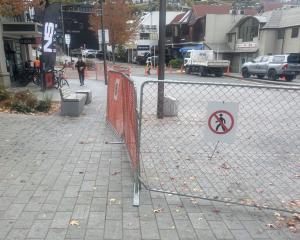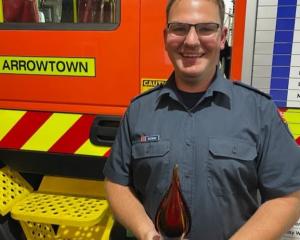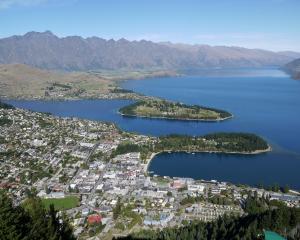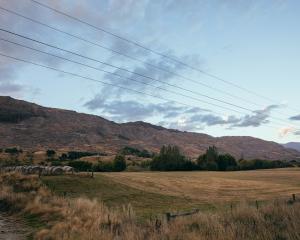
The council's plan covers an area of 136ha on either side of State Highway 6 and includes the under-construction Queenstown Country Club (QCC) - the only Special Housing Area (SHA) approved on the Ladies Mile to date. It will be considered by the council at its meeting this Friday.
Queenstown Lakes District Council planning and practice manager Blair Devlin said it was ''highly unlikely'' the maximum yield would be achieved, given not all landowners would want or be able to develop.
Further, the Housing Accord and Special Housing Areas Act (Hashaa) under which development would be contemplated expires in less than three years.
Releasing the indicative plan yesterday, council chief executive Mike Theelen said it was not a rezoning of the land.
''When Hashaa expires, the zoning of the operative and/or proposed district plan, depending on appeals ... will continue to apply.''
There were several ''drivers'' from central government to encourage councils to ensure they had enough land zoned and serviced for residential development, he said.
While there appeared to be enough residentially zoned land in the Wakatipu, little of it had been developed in the past decade and the council could not force landowners to develop it.
''So this is another way we can encourage suitable land to be developed as required by government.''
On Friday, the council will consider amending its SHA policy to include Ladies Mile as ''category 2'' land, which means the council may consider development there.
An application for a 207-lot SHA on the northern side of Ladies Mile was rejected in July.
If agreed, the proposal would go out for public feedback before the council made a final decision at its August meeting.
In his report to councillors, Mr Devlin said opportunities for urban growth in Queenstown were limited and largely contained in four areas.
The intensification of existing urban areas was being addressed through the proposed district plan, but that was likely to result in a ''limited'' number of units, while land along Malaghans Rd from Arthurs Point still had ''strong rural character'' and little capacity to absorb development.
Land between the Kawarau River and Jacks Point/Hanley Downs was being considered, but it was less readily serviced and would take longer to be enabled.
''Officers consider the Ladies Mile is best placed to accommodate urban development, given it is directly adjacent to existing urban development in the form of Lake Hayes, Shotover Country and the QCC.''
In coming to the recommendation, council staff had looked at numerous documents, models and issues. These included the dwelling capacity model, the Housing Accord and its targets, and issues around housing affordability in the district.
Population projections showed more than double the number of houses would be needed in Queenstown by 2048. That equated to about seven dwellings being built a week.
Queenstown had an ''extremely low uptake of the land that is zoned'' being residentially developed, the report said.
That was because 56% of that was held in three ownerships in the Wakatipu, described as ''problematic'' for the council.
That capacity was on land at Kelvin Peninsula, owned by Frank Mee, the Remarkables Park zone and the Jacks Point/Hanley Downs subdivision.
The last-named faces delays due to appeals lodged in the Environment Court and there had been little residential development on the Kelvin Peninsula or at Remarkables Park in the past 10 years.
The Hashaa was designed to fast-track development, thereby increasing the housing stock. By increasing supply, it should also improve affordability.
Average house prices in the district had increased by 29.5% over the past year - from $802,634 in February 2016 to $1,039,434 in February this year - while the average weekly rent in Queenstown in January this year was the highest in New Zealand at $550, a 22.8% increase on January 2016 ($448).
Ultimately, the report said while increasing land supply for residential development was only one element in addressing affordability issues, ''it is an element within the control of council, unlike, say, the tax treatment of property''.












